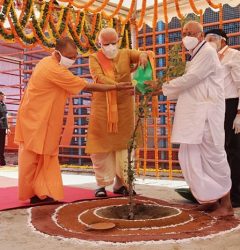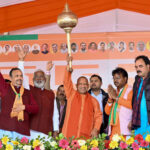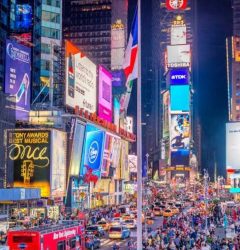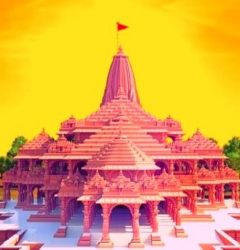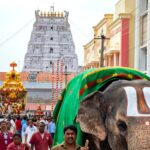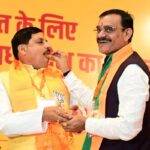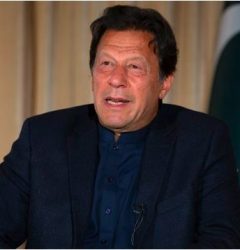New Delhi, 21 January. Rashtriya Swayamsevak Sangh’s Sarsanghchalak Mohan Bhagwat has described the occasion of the construction of the Shri Ram temple in Ayodhya as a symbol of the renaissance of national pride and said that it is the acceptance of India’s vision of a life of dignity of conduct by the modern Indian society. He now stressed the need to completely end unnecessary disputes and bitterness.
In his article written regarding the consecration ceremony of Ram temple going to be held on January 22 in Ayodhya, RSS Sarsanghchalak Mohan Bhagwat, while referring to the history of India, said, “The history of our India has been a continuous struggle with the invaders for the last one and a half thousand years. The purpose of the initial invasions was to plunder and sometimes (like the invasions of Alexander) to establish one’s kingdom. However, the invasions from the West in the name of Islam only brought complete destruction and isolation to society. Country: To demoralize society, it was necessary to destroy their religious places; hence, the foreign invaders also destroyed the temples in India. They did this not once, but many times. They aimed to demoralize the Indian society so that Indians permanently become physically weak and they can rule over them unhindered.”
Bhagwat said, “The destruction of Shri Ram temple in Ayodhya was also done with the same intention and for the same purpose. This policy of the invaders was not limited to Ayodhya or any one temple only, but was for the entire world. Indian rulers never They did not attack anyone, but the rulers of the world have done such misdeeds by being aggressive for the expansion of their kingdom. But this did not have the results on India as per their expectation, which they had hoped for. On the contrary, the faith of the society in India, Loyalty and morale never diminished, the society did not bow down, their struggle of resistance continued. Due to this, continuous efforts were made to take over the birthplace again and again and build a temple there. There were many wars and struggles for this. More sacrifices were made. And the issue of Ram Janmabhoomi remained in the minds of Hindus. In 1857, when war plans started being made against the foreign i.e. British power, Hindus and Muslims showed readiness to fight against them together and then there was mutual exchange of ideas between them. And at that time, a situation was created where there would be a reconciliation on the issue of banning cow slaughter and liberation of Shri Ram Janmabhoomi. Bahadur Shah Zafar also included a ban on cow slaughter in his manifesto. Therefore all societies fought together. Indians showed bravery in that war but unfortunately this war failed, and India did not get independence, British rule remained uninterrupted, but the struggle for Ram Temple did not stop.”
He said, “As per the policy of ‘Divide and Rule’ of the British among the Hindu Muslims, which was already in practice and became more and more strict according to the nature of this country. The British struggled to break the unity The heroes were hanged in Ayodhya and the question of liberation of Ram Janmabhoomi remained the same. The struggle for the Ram temple continued.”
Stating that the struggle for the Ram temple continued even after independence, Bhagwat further said, “After the country gained independence in 1947, when the Somnath temple was unanimously renovated, the discussion about such temples started. Ram Janmabhoomi All such consensus regarding liberation could have been considered, but the direction of politics changed. Forms of selfish politics like discrimination and appeasement came into vogue and hence the question remained as such. Governments took into account the wishes and will of Hindu society on this issue. They did not even consider the matter of the mind. On the contrary, they tried to destroy the initiative taken by the society. The legal battle related to this, which was going on since pre-independence, continued. The public movement for the liberation of Ram Janmabhoomi in 1980. It started in the decade and continued for thirty years. In the year 1949, the idol of Lord Shri Ramchandra appeared at Ram Janmabhoomi. In 1986, the lock of the temple was opened by the court order. In the coming period, through many campaigns and Karseva, Hindus The continuous struggle of the society continued. The decision of Allahabad High Court in 2010 clearly came before the society. Further insistence had to be continued to resolve the issue through a final decision as soon as possible. On 9 November 2019, after 134 years of legal struggle, the Supreme Court gave a balanced decision after examining the truth and facts. The feelings and facts of both the parties were also considered in this decision. This decision has been given after hearing the arguments of all the parties in the court. According to this decision, a board of trustees was established for the construction of the temple. The Bhoomi Pujan of the temple took place on 5 August 2020 and now Paush Shukla Dwadashi Yugabd 5125, accordingly the installation and consecration ceremony of the idol of Shri Ramlala has been organized on 22 January 2024.
Now urging an end to the controversy and bitterness on this entire issue, he further said, “From the religious point of view, Shri Ram is the worshipable deity of the majority society and the life of Shri Ramchandra is still an ideal of conduct accepted by the entire society. Therefore, now without any reason The opposition that has arisen over the dispute should be ended. The bitterness that has arisen in the meantime should also end. The enlightened people of the society must see that the dispute ends completely. Construction of Shri Ram Temple in Ayodhya Opportunity for construction i.e. copy of Renaissance of national pride




